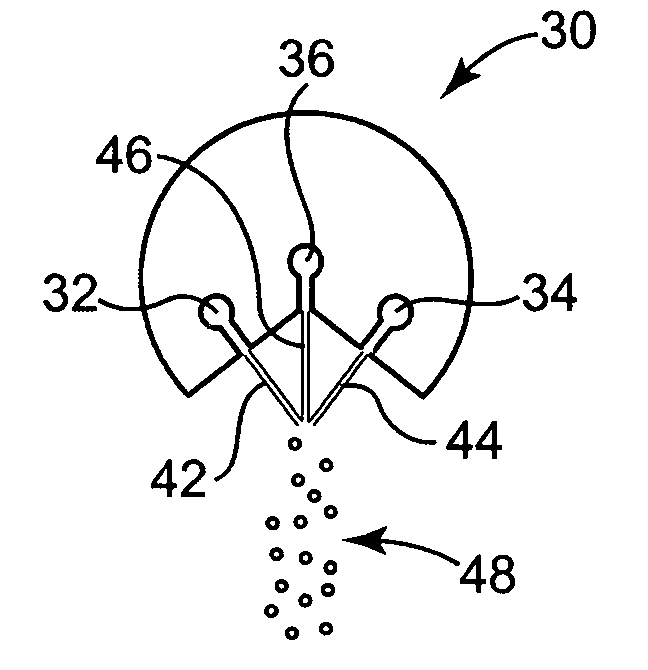Liquid aersol particle removal method
a technology of liquid aerosol and particle removal, which is applied in the direction of liquid cleaning, basic electric elements, cleaning process and apparatus, etc., can solve the problems of adds significantly to the complexity of the system, and unduly etching the substrate, etc., and achieves the effect of exceptional particle removal efficiency
- Summary
- Abstract
- Description
- Claims
- Application Information
AI Technical Summary
Benefits of technology
Problems solved by technology
Method used
Image
Examples
example 1
[0040]Six silicon nitride particle challenged wafers were cleaned with a liquid deionized water aerosol process using a single wafer spin module in a aerosol created by impinging DI water at a flow rate of (1 LPM) with dry N2 gas stream at a flow rate of 120 slm. Five particle challenged wafers were cleaned with the same aerosol process where the aerosol was created by impinging DI water at a flow rate of (1 LPM) with a 1% IPA / N2 gas stream at a flow rate of 120 slm. All of the wafers were processed within about a 15 minute time frame. Particle measurements were made for sizes greater than 65 nm using a KLA-Tencor SP1 / TBI measurement tool. Particle removal efficiency was improved from an average of 61.7% with dry N2 to an average of 66.8% with 1% IPA vapor in N2.
example 2
[0041]In this example, 200 mm wafers were contaminated with silicon nitride particles by spin deposition and then allowed to sit at ambient conditions to “age” for 24 hours. Five silicon nitride particle challenged wafers were cleaned with a liquid deionized water aerosol process using a single wafer spin module in a aerosol created by impinging DI water at a flow rate of 1 LPM with dry N2 gas stream at a flow rate of 200 slm. Six particle challenged wafers were cleaned with the same aerosol process where the aerosol was created by impinging DI water at a flow rate of 1 LPM with a 3% IPA / N2 gas stream at a flow rate of 200 slm. Particle removal efficiency reported in Table 1 is the average across the wafers run under each condition.
TABLE 1averageParticle removalParticle sizestartingefficiency (%)bin (nm)countsN2 onlyN2 + 3% IPA65-90198262.476.3 90-120136472.282.9120-15073978.188.4150-20064086.193.2200-30099490.294.9area11257.983.3
PUM
 Login to View More
Login to View More Abstract
Description
Claims
Application Information
 Login to View More
Login to View More - R&D
- Intellectual Property
- Life Sciences
- Materials
- Tech Scout
- Unparalleled Data Quality
- Higher Quality Content
- 60% Fewer Hallucinations
Browse by: Latest US Patents, China's latest patents, Technical Efficacy Thesaurus, Application Domain, Technology Topic, Popular Technical Reports.
© 2025 PatSnap. All rights reserved.Legal|Privacy policy|Modern Slavery Act Transparency Statement|Sitemap|About US| Contact US: help@patsnap.com


